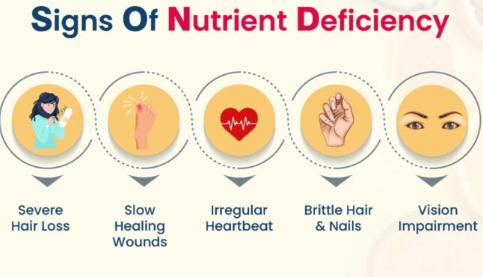Fibromyalgia is a chronic condition that affects millions of people worldwide, primarily characterized by widespread musculoskeletal pain, fatigue, and cognitive disturbances. While the exact cause of fibromyalgia is still not completely understood, several factors contribute to its development and severity, including genetics, stress, and environmental factors. One often overlooked aspect of fibromyalgia is the impact of nutritional deficiencies on its symptoms. In this article, we explore how nutritional deficiencies can worsen the symptoms of fibromyalgia and what individuals can do to address these deficiencies for better overall health.
The Role of Nutrition in Fibromyalgia
Good nutrition plays an essential role in maintaining overall health and well-being. For individuals with fibromyalgia, proper nutrition is crucial to support immune function, reduce inflammation, improve energy levels, and manage pain. Nutritional deficiencies can exacerbate existing fibromyalgia symptoms, such as fatigue, pain, and cognitive dysfunction. Understanding which nutrients are essential for fibromyalgia management and recognizing the signs of deficiencies is key to improving quality of life for those living with the condition.
Common Nutritional Deficiencies in Fibromyalgia
Several nutrients are particularly important for individuals with fibromyalgia. Deficiencies in these nutrients may not only worsen the symptoms of fibromyalgia but can also contribute to the development of additional health issues. Here are some of the most common nutritional deficiencies found in individuals with fibromyalgia:
1. Vitamin D Deficiency
Vitamin D is a vital nutrient for bone health, immune system function, and inflammation regulation. Many studies have found that individuals with fibromyalgia have lower levels of vitamin D compared to the general population. Vitamin D deficiency can exacerbate muscle pain, fatigue, and mood disturbances—all of which are common symptoms of fibromyalgia. Additionally, low vitamin D levels have been linked to an increased risk of developing other chronic conditions, such as osteoporosis, which can further complicate fibromyalgia symptoms.
Symptoms of Vitamin D Deficiency:
- Muscle and joint pain
- Increased fatigue and weakness
- Depression and mood swings
- Bone pain or tenderness
- Difficulty sleeping
2. Magnesium Deficiency
Magnesium is essential for muscle function, nerve transmission, and energy production. In fibromyalgia, many individuals experience heightened muscle pain, cramps, and stiffness. Magnesium plays a key role in relaxing muscles and reducing pain. Studies have shown that individuals with fibromyalgia are more likely to be magnesium deficient, and magnesium supplementation can help alleviate symptoms such as muscle tenderness and fatigue. Additionally, magnesium is crucial for managing stress and promoting restful sleep, both of which are often disrupted in fibromyalgia.
Symptoms of Magnesium Deficiency:
- Muscle cramps or spasms
- Fatigue and low energy
- Insomnia and poor sleep quality
- Anxiety and irritability
- Increased sensitivity to pain
3. B Vitamins Deficiency (B12, B6, Folate)
B vitamins, particularly B12, B6, and folate, are important for the proper functioning of the nervous system and energy production. Deficiency in these vitamins is common in individuals with fibromyalgia, as they play a key role in maintaining the health of nerve cells and reducing inflammation. A lack of B vitamins can lead to increased fatigue, nerve pain, and cognitive dysfunction (often referred to as “fibro fog”). B12, in particular, is known to support the myelin sheath, which protects nerve cells and improves communication within the nervous system.
Symptoms of B Vitamin Deficiency:
- Fatigue and low energy
- Brain fog, memory problems, and difficulty concentrating
- Numbness or tingling in the limbs
- Irritability and mood swings
- Depression or anxiety
4. Omega-3 Fatty Acids Deficiency
Omega-3 fatty acids are essential fats that play a crucial role in reducing inflammation and supporting brain health. These fatty acids are found in fatty fish, flaxseeds, and walnuts. Omega-3s have been shown to reduce inflammation, which can help alleviate the widespread pain and stiffness associated with fibromyalgia. Inadequate intake of omega-3 fatty acids can increase inflammation, worsening symptoms such as pain and joint stiffness.
Symptoms of Omega-3 Fatty Acids Deficiency:
- Increased joint and muscle pain
- Chronic inflammation
- Dry skin, hair, and nails
- Cognitive issues, including poor concentration
- Mood disturbances, including depression and anxiety
5. Iron Deficiency
Iron is crucial for oxygen transport throughout the body, and it plays a significant role in energy production. People with fibromyalgia are at an increased risk of developing iron deficiency due to the fatigue and reduced physical activity associated with the condition. Low iron levels can worsen symptoms of fatigue and weakness, which are already prevalent in fibromyalgia. In some cases, iron deficiency can lead to anemia, which may compound the exhaustion and general malaise experienced by individuals with fibromyalgia.
Symptoms of Iron Deficiency:
- Extreme fatigue and weakness
- Pale skin and shortness of breath
- Dizziness or lightheadedness
- Cold hands and feet
- Irritability and mood swings
6. Calcium Deficiency
Calcium is necessary for maintaining bone density and muscle function. A deficiency in calcium can lead to increased muscle cramps and weakness, which are common symptoms in fibromyalgia. In addition, fibromyalgia is often associated with a higher risk of osteoporosis and bone fractures, making adequate calcium intake essential for bone health. Calcium also plays a role in nerve signaling, which may influence pain perception and other fibromyalgia symptoms.
Symptoms of Calcium Deficiency:
- Muscle cramps and spasms
- Numbness or tingling in the hands or feet
- Weak nails and brittle bones
- Difficulty sleeping
- Increased pain sensitivity
Recognizing Nutritional Deficiencies in Fibromyalgia
Recognizing the signs and symptoms of nutritional deficiencies in fibromyalgia is important for early intervention and improving overall health. However, many of the symptoms of nutritional deficiencies overlap with the primary symptoms of fibromyalgia, making it difficult to differentiate between the two. The following tips can help individuals recognize whether their fibromyalgia symptoms may be linked to nutritional deficiencies:
1. Evaluate Energy Levels and Fatigue
If an individual with fibromyalgia notices that their fatigue is worsening or becoming more persistent, it may be due to a deficiency in vital nutrients such as B vitamins, iron, or magnesium. Increased fatigue that is not relieved by rest could signal a deficiency.
2. Monitor Pain Levels
Worsening muscle or joint pain that is not typical of fibromyalgia’s usual flare-ups could be a sign of magnesium or vitamin D deficiency. Individuals should also note if the pain is accompanied by muscle cramps or spasms.
3. Track Cognitive Function
Increased difficulty with concentration, memory problems, or brain fog that interferes with daily activities might be related to B vitamin or omega-3 fatty acid deficiencies. It is important to observe when cognitive issues appear and whether they are linked to other symptoms.
4. Notice Skin, Hair, and Nail Changes
Dry skin, brittle nails, or thinning hair may indicate a deficiency in omega-3 fatty acids or essential vitamins. These signs may often accompany an increased sense of inflammation and fatigue.
Addressing Nutritional Deficiencies in Fibromyalgia
To address nutritional deficiencies, individuals with fibromyalgia should work with a healthcare provider to develop a tailored treatment plan. Some strategies include:
1. Dietary Adjustments
A diet rich in fruits, vegetables, lean proteins, whole grains, and healthy fats can help address deficiencies in vitamins and minerals. Foods high in magnesium, vitamin D, omega-3 fatty acids, and B vitamins should be included regularly in the diet. For example, fatty fish (salmon, mackerel), leafy greens, fortified dairy products, nuts, and seeds can provide essential nutrients.
2. Supplements
In some cases, dietary changes may not be enough to correct deficiencies, and supplementation may be necessary. Common supplements for individuals with fibromyalgia include vitamin D, magnesium, omega-3 fatty acids, B-complex vitamins, and iron. It is important to consult with a healthcare provider before starting any supplements to avoid overdosing or interactions with other medications.
3. Lifestyle Modifications
Maintaining a balanced lifestyle that includes regular physical activity, adequate sleep, and stress management can support overall health and help mitigate the effects of nutritional deficiencies. Exercise can improve nutrient absorption and reduce the severity of fibromyalgia symptoms, while managing stress can help reduce inflammation and improve mood.
Conclusion
Nutritional deficiencies are a significant yet often overlooked factor in the management of fibromyalgia. Addressing deficiencies in key nutrients such as vitamin D, magnesium, B vitamins, omega-3 fatty acids, iron, and calcium can help alleviate many of the symptoms associated with fibromyalgia, including pain, fatigue, and cognitive dysfunction. By recognizing the signs of nutritional deficiencies and making dietary and lifestyle changes, individuals with fibromyalgia can enhance their well-being and reduce the burden of this chronic condition.

Click Here to Visit the Store and find Much More….
For More Information Related to Fibromyalgia Visit below sites:
References:
Fibromyalgia Contact Us Directly
Click here to Contact us Directly on Inbox
Official Fibromyalgia Blogs
Click here to Get the latest Chronic illness Updates
Fibromyalgia Stores

